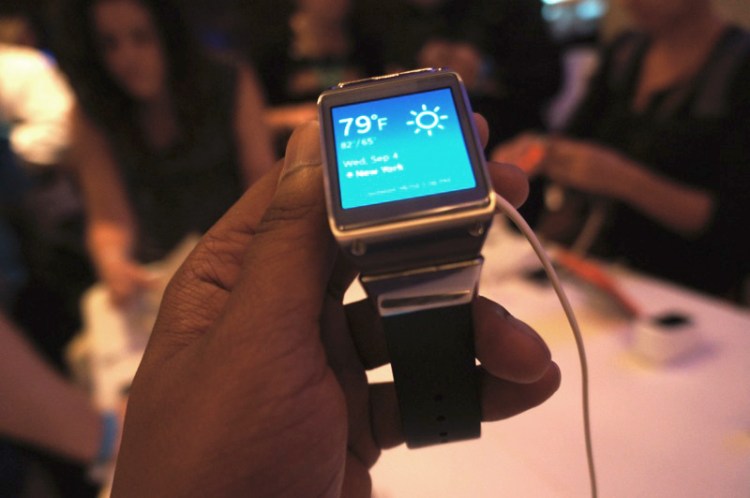A bunch of features does not a good product make
I’ve been covering Samsung’s mobile devices for years now, and I still have no clue how it justifies some of its innovations. It’s almost as if the justification isn’t even necessary for Samsung — it simply throws everything it can think of into its products and sees what sticks. (See the Galaxy smartphone’s ability to pause video when you look away, or the multitude of camera features nobody will ever use in all of its latest smartphones.)
With the Galaxy Gear, Samsung is playing the same tune. On paper, a smartwatch with a bright and colorful touchscreen, a slew of apps, a camera, and decent integration with your smartphone sounds like a good deal. But in practice, pretty much everything the Gear does has major drawbacks.
The camera shoots low quality pics and only short videos. Navigating a tiny touchscreen interface is a massive headache, and it involves learning several unintuitive gestures (and you’ll have to read the manual to find many of them). The smartphone integration, already limited to just a few Samsung devices, doesn’t always work as seamlessly as I would like, leading to things like missed email notifications.
When it comes to features, especially for new and unproven products, quality is far more significant than quantity. That’s especially true when those features are essential to how you’d use that product.
Why is Samsung a follower? It learns markets from the inside
As I pointed out in my Galaxy S4 review, Samsung’s mobile dominance stems from its role building components for its competitors. It builds the displays, memory chips, and processors for some of its competitors (including the iPhone), experience which gave it a leg up as it evolved the Galaxy S series over time.
That’s not anything new for Samsung: It built LCD screens before it got into the smartphone market, as well as hard drives and RAM chips before it got into PCs. It learns the ins and outs of electronics markets by being a trusted supplier for bigger players, and once it has learned enough, it slowly makes its way in with its own products.
While not terribly exciting, it’s a model that can be good for business. A combination of savvy marketing and solid hardware led to Samsung’s Android dominance with its Galaxy S series, success which has trickled down to its other models making it the largest mobile phone manufacturer by unit sales last year.
But when it comes to the Galaxy Gear, Samsung doesn’t have anyone to follow except for the few companies who’ve built lackluster smartwatches so far. It’s used to iterating on existing ideas, not thinking outside the box.
The Gear was Samsung’s chance to show that it could single-handedly reinvent an entire gadget category, and it simply blew it.
The Verdict: A missed opportunity
The Galaxy Gear is a smartwatch that isn’t worth your time.
There’s a chance Samsung could eventually get it right — it took three tries before Samsung made a successful Galaxy S phone — but by that point it will have to compete with Apple’s rumored iWatch, and whatever Google ends up releasing.
On the plus side for Samsung, by that point it will likely have some far better ideas to imitate.


